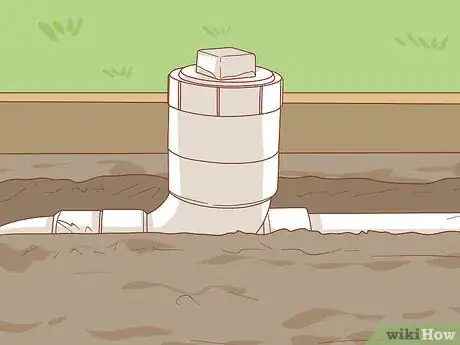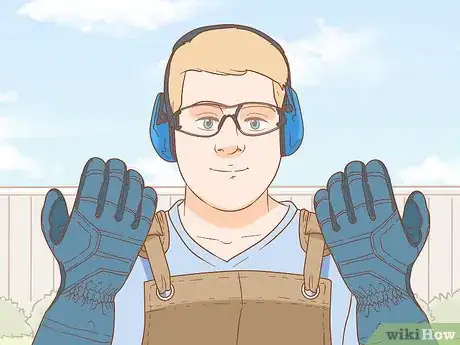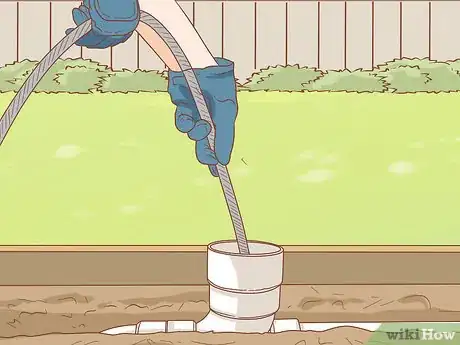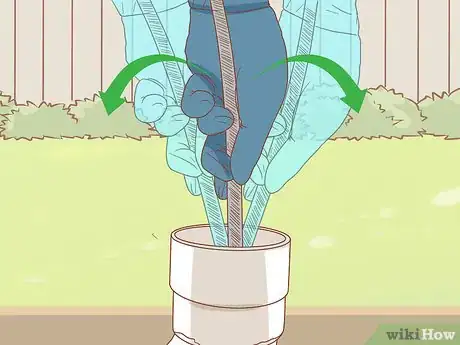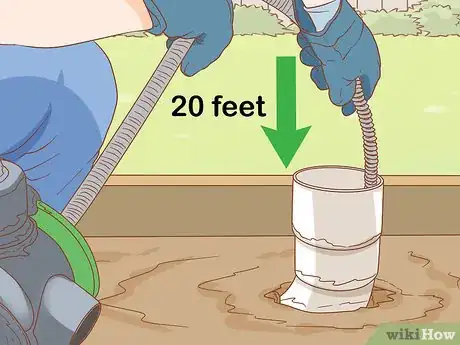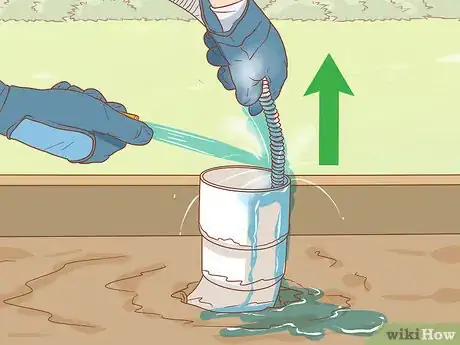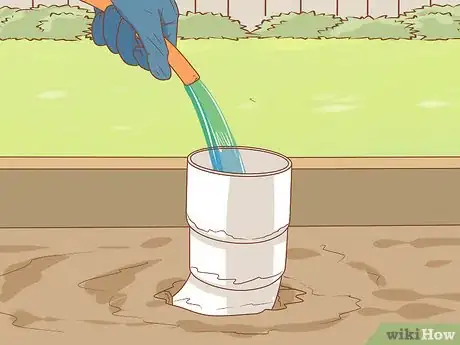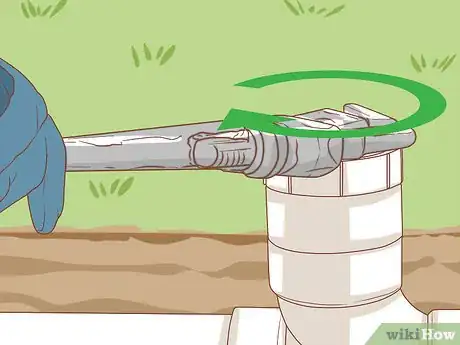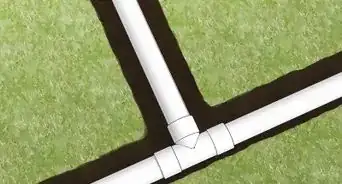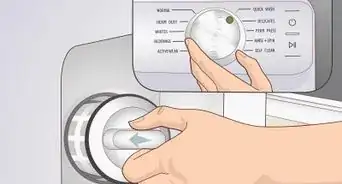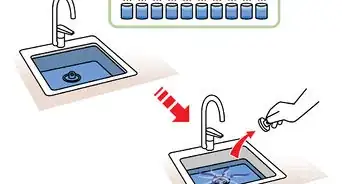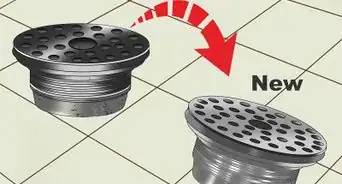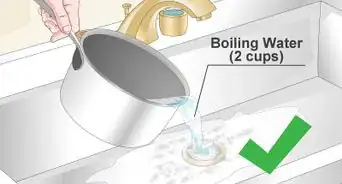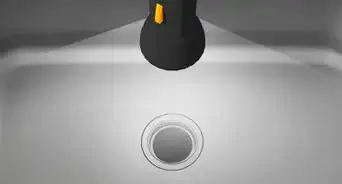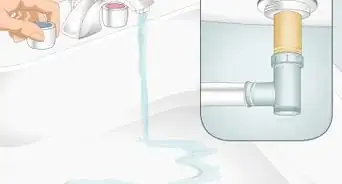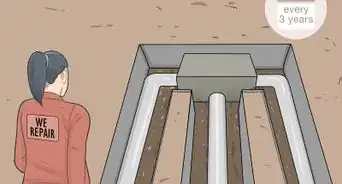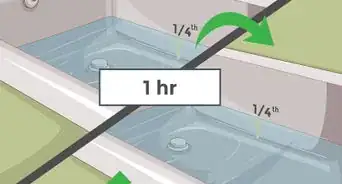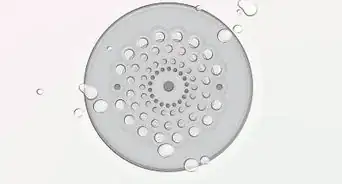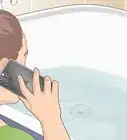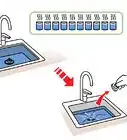This article was co-authored by wikiHow Staff. Our trained team of editors and researchers validate articles for accuracy and comprehensiveness. wikiHow's Content Management Team carefully monitors the work from our editorial staff to ensure that each article is backed by trusted research and meets our high quality standards.
There are 9 references cited in this article, which can be found at the bottom of the page.
This article has been viewed 14,702 times.
Learn more...
If several of your water fixtures are backed up, you may have a blockage in your main drain line. If this clog is not cleared out, it could cause a major mess and significant damage to your home. With the proper tools, unclogging a main drain isn't too difficult and doing it yourself, instead of calling a plumber, can save you hundreds of dollars. All you need is a pipe wrench and a large drain cleaner (also known as a sewer snake). If you suspect that tree roots are the cause of the blockage or if your pipes are old and corroded, though, you should call a professional plumber.
Steps
Opening the Clean-Out Plug
-
1Rent a large drain cleaner from a local home improvement store. To unclog a main drain, you'll need a drain cleaner (or sewer snake) with a 5⁄8–3⁄4 in (1.6–1.9 cm) diameter cable. Most large drain cleaners will also have a cable length of 100 feet (30 m), which should be long enough to reach any clog.[1]
- Renting one of these for 1 day may cost anywhere from $50 to $100, and require an additional deposit.
-
2Locate the clean-out plug on your main drain pipe. The clean-out plug for your main drain pipe may be in 1 of several places. Search for it in your garage, crawl space, basement, or outside right next to the foundation of your house.[2]
- Look for a PVC pipe that's about the thickness of your leg and has a circular plug with a cube shape sticking out of its top.
- If you're unsure what to look for, check out videos online to get an idea.
Advertisement -
3Attach a bit to the end of your cable. On most drain cleaners, use an Allen wrench or similar tool to unscrew the bolt at the end of the cable. Then, slide the bit you want to use onto the end of the cable and screw the bolt back into place.[3]
- If you're unsure which bit to use, start with the bit that looks like a “U.” This one is effective at breaking up clogs quickly.
- The specific way to attach a bit will vary depending on the model of drain cleaner you're using.
- The bits and all necessary tools will be included with the drain cleaner you rent.
-
4Wear gloves and protective eyewear for safety. Slip on a pair of latex gloves and then put on a pair of heavy-duty work gloves over these. This will help protect your skin from contaminated water and protect your hands when you operate the cable of the drain cleaner.[4]
- Wear old clothes that you don't mind getting dirty.
- You'll also want to clear the area around the clean-out of anything that can get damaged by water.
-
5Use an adjustable pipe wrench to slowly open the clean-out plug. Fit the adjustable wrench snugly on the clean-out plug. Then, turn the clean-out plug slowly to the left to loosen it. When you see water begin to leak out of the line, stop turning the wrench. When the water oozing out begins to slow, turn the clean-out plug a little more. Continue turning until the plug comes off.[5]
- Opening the clean-out gradually like this will help ease the pressure in the line. This will prevent water from gushing out of the line.
- Stand as far back as you can as you're loosening the plug to avoid getting wet or hit by the clean-out plug if it shoots off.
Clearing the Obstruction
-
1Feed the drain-cleaning cable down the drain line until you hit the clog. Go slowly since there will be a lot of water in the pipe. Because there are many different models of drain cleaners, be sure to closely read and follow the instructions that come with the specific model you're using.[6]
- The cable will be heavy, so moving it around and feeding it down the drain will take some muscle. Take care not to strain yourself.
- Many drain cleaners can feed the cable down the drain automatically. If the model you rent is automatic, turn on the machine and then step on the foot pedal to feed the cable down the pipe.[7]
-
2Move the cable around once you hit the clog to break it up. As you continue to feed the cable down the drain, move the cable side to side to help loosen the material clogging the pipe. Be careful to move the cable around slowly to avoid causing it to kink.[8]
- This process might take a little time, so stay patient and keep at it!
- When you see the water begin to bubble, that's a sign that you're starting to break up the clog.
- You'll know when you've cleared the drain when you hear a loud gurgling sound and then see the water drop down from the top of the open drain line.
-
3Continue to feed the cable down the drain once you clear the clog. This will help clear out the pipe and prevent the solid material that you've broken up from reclogging farther down the pipe. Feeding another 20 feet (6.1 m) of cable down the line should be sufficient.[9]
- You can feed the entire length of the snake down the drain if you'd like to do a thorough job.
-
4Rinse grime off the cable as you pull it out of the drain. Use a garden hose to rinse off sections of the cable as you pull it out of the drain. Turn the water on all the way and set the water pressure as high you can to thoroughly clean the cable. After rinsing off sections of the cable, re-spool it.[10]
-
5Pour water down the drain to help flush out any remaining debris. Once you've pulled the entire cable out, set your garden hose to its highest pressure setting and direct the water down the pipe. Run the hose for about 30 seconds or so.[11]
-
6Replace the clean-out plug. Use your adjustable pipe wrench to screw the plug back onto the clean-out pipe. Turn it to the right until it's on tightly.[12]
Things You'll Need
- Large drain cleaner (snake) with 5⁄8–3⁄4 in (1.6–1.9 cm) diameter cable
- Latex gloves
- Heavy-duty work gloves
- Protective eyewear
- Adjustable pipe wrench
- Garden hose
Warnings
- Call a professional plumber if your pipes are corroded or if you suspect tree roots are the cause of the blockage.⧼thumbs_response⧽
- If you believe there's a clog in your main drain line, avoid using the plumbing system in your home until you've cleared the obstruction.⧼thumbs_response⧽
References
- ↑ https://youtu.be/3ExNu_61Kdo?t=79
- ↑ https://youtu.be/3ExNu_61Kdo?t=5
- ↑ https://youtu.be/0SCv1Zl2tCk?t=187
- ↑ https://youtu.be/3ExNu_61Kdo?t=17
- ↑ https://youtu.be/3ExNu_61Kdo?t=26
- ↑ https://youtu.be/3ExNu_61Kdo?t=79
- ↑ https://youtu.be/3ExNu_61Kdo?t=278
- ↑ https://youtu.be/3ExNu_61Kdo?t=306
- ↑ https://youtu.be/3ExNu_61Kdo?t=403

